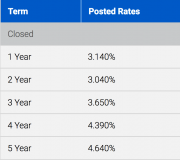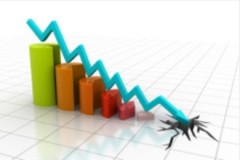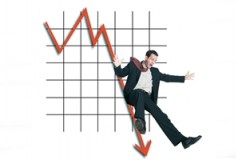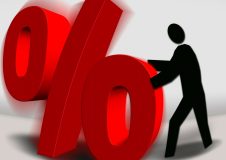By The Spy on
May 30, 2017
Big bank posted mortgage rates arelike sticker priceson new boats. Almost nobody pays them. Today’stypical5-year posted rate is 4.64%. Were you to get stuck paying this joke of a mortgage rate, it would cost you$10,394 more interest every five years, for every $100,000 of mortgage. That’s compared tothe averagestreetrate, which is almost 220 basis points lower at2.45%. Posted rates have...
read more
By The Spy on
May 18, 2017
The “Trump Bump” it was called — that 50+ basis point run-up in rates following President Donald Trump’s surprise presidential win. Well, theTrump Bump has become the Trump Dump. Bond yields dove to a 6-month lowyesterdayon fresh reports of White House scandals and a stock selloff. Here’s the chart: This dip in yields was triggered by investor concerns about the...
read more
By The Spy on
May 12, 2017
Fixed and variable rates beganthe year on totallydifferent trajectories. Fixed rates were on the wayup. Variable rates were on the waydown. But in the last eight weeks, the gap between the two has conspicuously narrowed, withfixed rates fallingup to 20 bps. That’s driven down the “insurance premium” borrowers pay for the security of a fixed rate. Canada’s lowest 5-year...
read more
By The Spy on
April 20, 2017
The foundation for all Canadian interest rates is the overnight target rate. It’s been stuck at orbelow 1% for an incredible eight years. That’s never happened before. We’re living in bizarroeconomic timesand those with big mortgages are hoping they’lllast. But inflation, the key interest rate driver, is not down for the count. As sure as the Maple Leafs will disappoint...
read more
By The Spy on
March 15, 2017
Opps!…They…Did…It…Again. For the third time in 11 years, the planet’s monetary policy superpower has elevated America’s key lending rate by 1/4 point. Now it’s a question of how Canadian rates will react. In and of itself, one highly anticipated U.S. rate hike is immaterial. It’sthe longer-term trendthat’s worth talking about. On that note, the Fed projects its policy rate...
read more
By The Spy on
March 5, 2017
The fun thing about running a rate site is that yousee lots of interesting data, likethe rates that consumers click on the most. In reviewing hundreds of thousands of RateSpy clicks thispast year, some noteworthytrends have emerged. Here’swhat our latest internal analytics reveal… ******** The 5-year fixed rate,typicallya fan favourite, haslost lustre thesepast12 months. Through February 2017, 5-fixeds have garnered...
read more
By The Spy on
February 26, 2017
Fixed and variable rates have taken thefork in the road, each in a different direction. 5-year fixed mortgage ratesrates headed north at the end of last year. They’re hitched to bond yields, which soared when markets got spooked by the threat of Trumpenomics—i.e., inflation and higher borrowing demand. Variable rates have swungthe other direction thanks mainly to fatterdiscountson insured mortgages....
read more
By The Spy on
January 28, 2017
Whatdo interest rate cycles of the past say about rates today? CNBC recently interviewed notedWall Street technical analyst Louise Yamada and asked her thatsame question. If you’re a chart and market history geek, her answers will be of interest: On the length of cycles Interest rate cycles have typically lasted for decades, from22 to 37 years. “The reversals from rising...
read more
By The Spy on
January 17, 2017
Buying a home with less than 20% down? The government’s about to milk you for a few more grand. Come March 17, CMHC is boosting its default insurance premiums for the third time in three years. Here’s what they’re rising to, based on down payment size: Less than 10% down: +0.40% to 4.00% Between 14.99 and 10% down: ...
read more
By The Spy on
January 6, 2017
Trump’s battle-cry has been “jobs, jobs, jobs,” andthat’shadbondtraders screaming“sell, sell, sell.” Why? Because a Trump-pumpedeconomy suggests: more U.S. government borrowing (greaterbond supply is bullishfor rates) more business and consumer borrowing (higherdemand for money is bullishfor rates) more inflation risk (a haunting thought for bond investors, and bullishfor rates). Meanwhile, the world’s monetary kingpin, Janet Yellen, says the U.S. labour market...
read more
 log in
log in









